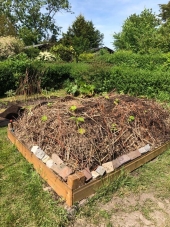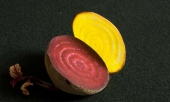








With greetings from Britain
Rosalind













I have never met a stranger, I have met some strange ones.














I have never met a stranger, I have met some strange ones.














I have never met a stranger, I have met some strange ones.





 1
1




Irene Kightley wrote:Both Rosalind and I have mentioned using waste wool or "daggings" which is dirty wool cut from around the anus/vulva of sheep/goats or where ticks or felting have damaged the wool.
I always try to use good wool as much as possible for a more "noble" use before using it on the garden.
With greetings from Britain
Rosalind





 1
1








Irene Kightley wrote: There will be more next year.
With greetings from Britain
Rosalind
 1
1








With greetings from Britain
Rosalind








With greetings from Britain
Rosalind

|
That is a really big piece of pie for such a tiny ad:
Learn Permaculture through a little hard work
https://wheaton-labs.com/bootcamp
|


.jpg)





